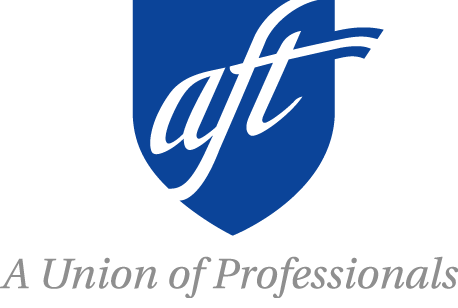Overview
The Colorín Colorado ELL Strategy Library includes 30 research-based classroom strategies that can be incorporated and adapted for K-12 instruction. While the strategies were written with multilingual learners and ELLs in mind, they can be used to support academic language and content instruction for all students.
The strategies were developed by ELL experts Beth Skelton and Tan Huynh, and some of the strategies are featured in their book, Long-Term Success for Experience Multilinguals. Additional strategies, visuals, and resources were developed by Lydia Breiseth, Director of Colorin Colorado.
About the Strategies
You can search and filter the strategies by skill, proficiency level, skill, and targeted keywords. In addition, each strategy includes the following components:
- Strategy Overview: A quick introduction to the strategy and its purpose
- How This Strategy Supports Students’ Language Development: Additional information about how the strategy can support students’ academic language development across different language domains (reading, writing, speaking, listening) and specific areas, such as vocabulary or background knowledge
- Step-by-Step Instructions: Instructions for using the strategy from start to finish, including tips one what to prepare beforehand and how to incorporate students’ home languages within the strategy
- Differentiation: Ideas for differentiating strategies for different language proficiency levels (e.g., Entering/Emerging, Expanding, Developing)
- Lessons Learned: Tips to help maximize success based on educators’ own experiences
- Co-Teaching Considerations: Ideas for how to collaborate around the strategy, including different roles for classroom teachers and ELL specialists
- Examples: Examples of what the strategies look like in practice, such as text, images, slides, videos, or related resources
- Recommended Resources: Additional information, research reports, or classroom materials related to the strategy
How to Use These Strategies
In order to get started, we recommend choosing just a single strategy to explore. You may wish to browse the collection or try filtering or searching first.
Example: Vocabulary Strategies
For example, let’s say you’d like to find some strategies related to vocabulary. You can filter for "Vocabulary" under "Academic Language Feature" and see what might be a good fit for your lesson and your goals for instruction. Some options include the following:
Introducing a new unit
Reviewing vocabulary
Content-Area Focus
If you teach in a content area or collaborate with content-area educators, there may also be some strategies that are particularly useful for building background knowledge, illustrating a process or concept, supporting students’ writing in that discipline, teaching students how to interpret visuals or data, or expanding critical thinking skills. Talk with your colleagues about their content objectives and areas where students need more support so that you can identify appropriate strategies for their instruction.
Student Input
In addition, look for ways to engage students around strategies – not just by moving through the steps of the strategies, but giving them the tools to use these strategies independently and by asking them to pay attention to what supports their learning. You can learn a lot by asking students what is working (or not!).
For example, in their book, Ms. Skelton and Mr. Huynh share the following student response to the question, “What is your favorite class?”
Biology is my favorite class because I love learning about science. I want to study medicine after high school. The teacher gives step-by-step directions for every project so I know exactly how to complete it. She also labels pictures and explains the concepts clearly. (p. 49)
How to Share These Strategies
You are welcome to share these strategies in all kinds of settings, such as:
- Sharing the library or specific strategies via email or newsletters
- Posting the library or specific strategies in resource collections, lists, and Padlets
- Incorporating strategies into co-teaching, collaboration, and coaching
- Printing the strategies to share with colleagues
For example, Areli Schermerhorn, an ELL/bilingual peer evaluator in Syracuse, NY, has begun using the strategies directly in her work with teachers. She writes,
One of the most important parts about my job as a peer observer is sharing meaningful feedback with teachers. The Colorín Colorado ELL Strategy Library has significantly facilitated this task. It has become a staple among the resources I recommend to teachers. Teachers appreciate ideas that are both straightforward and grounded in the best practices and research.
The ELL Strategy Library from Colorín Colorado not only provides clear, step-by-step guidance but also offers suggestions for adapting instruction to meet the needs of students at different language proficiency levels. This aspect is particularly transformative as it emphasizes the importance of crafting instruction that addresses the language development of our English learners. Additionally, I find the insights in the "Lessons Learned" and the considerations for co-teaching immensely valuable. With the inclusion of videos, images, diagrams, and detailed examples, teachers can confidently implement these strategies.
Activity Ideas for Professional Learning
You can also use the strategy library as part of professional learning, giving educators a chance to explore the library and share what they are finding with each other. You can bring up the strategy library with a link or QR code.
1. Strategy Exploration
In order to help your colleagues get familiar with the strategy library, try the following activity in a group setting. (This works best if each person has a laptop, but it can be done on phones or tablets as well.) You can also use a graphic organizer for this activity, described below.
- Pair partners together and assign each person a role (Partner A/Partner B).
- Ask each person to bring up the strategy library on their device.
- Ask each person to choose a single strategy to explore in the Strategy Library. (In order to increase the likelihood that people look at different strategies, you may wish to use assignments. For example, Partner A looks at page #1 of the library and Partner B looks at page #2. You can also assign terms from the dropdown menu: Partner A looks for vocabulary strategies, and Partner B looks for writing strategies.)
- Ask each person to read through their strategy. (3-5 minutes)
- Use a turn and talk activity so they can summarize what they learned. Ask Partner A to share what they learned, how they might use this strategy, and how they might describe this strategy to a colleague. (3-4 minutes)
- Then ask Parter B to do the same. (3-4 minutes)
- Ask each person to fill out the Strategy Library graphic organizer, which prompts them to write down how they might use and share the strategies they have explored.
If you have time, repeat the activity with a new strategy.
Ask people to share their findings and ideas with the larger group.
Discussion questions
Additional questions for discussion might include:
- What strategy are you excited to take back to your setting and why?
- How can you use this strategy in your instruction or collaboration?
- What is an example of how you might use this strategy in content instruction?
- How might this strategy expand or enhance your current instruction?
2. Strategy Modeling
For further extension, you may wish to have participants use and model the strategy as part of the activity. For example, you can model the Collaborative Reading Protocol as partners read through one of the selected strategies together. As a team, they decide which of the 2 strategies (or a 3rd selection), they would like to read together. Once they select their strategy, have them follow these steps:
- Partner A reads the first chunk of text or first section of the strategy.
- Partner B starts a discussion about that section by asking a question, making a connection, or summarizing the information.
- Partner A adds ideas to the discussion.
- Partner B reads the second section aloud.
- Partner A starts a discussion about that section by asking a question, making a connection, or summarizing the information.
After they read and discuss that one strategy together, have them go to the Collaborative Reading Protocol strategy and quickly review the steps they just experienced with their partner. Debrief how the protocol worked for them and what other modifications they would make to the Collaborative Reading Protocol.
3. BINGO!
You can also play ELL Strategy BINGO! This will likely work best in a group of people who are meeting in person and can move around the room.
Addressing Colleagues' Questions
Some colleagues may raise questions about whether or not it's "fair," appropriate, or helpful to learners to use scaffolds and ideas featured in the Strategy Library. The goal of the strategies is not to water down the content, but rather to increase students’ access to more rigorous content.
Ms. Skelton and Mr. Huynh have heard this question many times in their work. They write,
When we share these strategies to make assessments more equitable, some teachers express concern that they give experienced multilinguals an "unfair advantage"...In response, we share that even highly experienced and skilled mountain climbers use scaffolds such as ropes and harnesses. Their tools do not shrink the height of the mountain. They just make climbing the mountain possible. (p. 62)
One suggestion they offer is to share examples of student work produced with and without these kinds of strategies and scaffolds. You can also encourage educators to do their own research by trying a strategy and comparing how students did before and after. While it may take some trial and error, many educators become more open to these ideas (and even share them with others) once they see what is possible!
What Teachers Are Saying
"Yet another amazing resource from @ColorinColorado!"
"Leaning on tried and true strategies to scaffold learning for our ELLs…priceless!"
"I’m starting sequencing and life cycles with my first graders…might have to try Match, Sort, and Order!"
"This is like gold. Can’t wait to explore this with colleagues in the 'strategies and tools for diverse learners' in-service. Thank you @ColorinColorado!"
"If you have ELLs in your class, you need to look at this!! All strategies in one place & differentiation examples! Thank you!!"
"This feels like a PD waiting to happen…"


 This project was made possible through the generous support of our founding partner, the American Federation of Teachers.
This project was made possible through the generous support of our founding partner, the American Federation of Teachers.






Add new comment